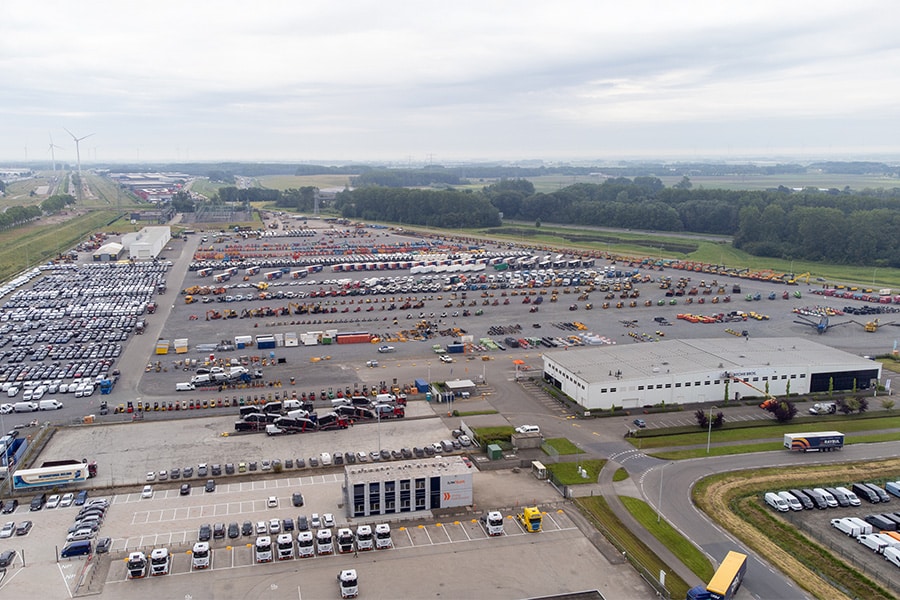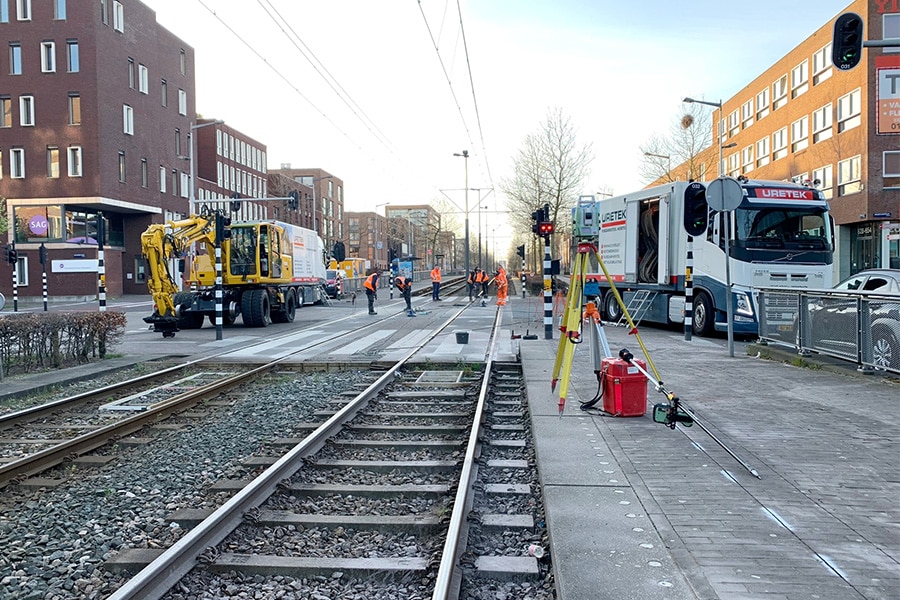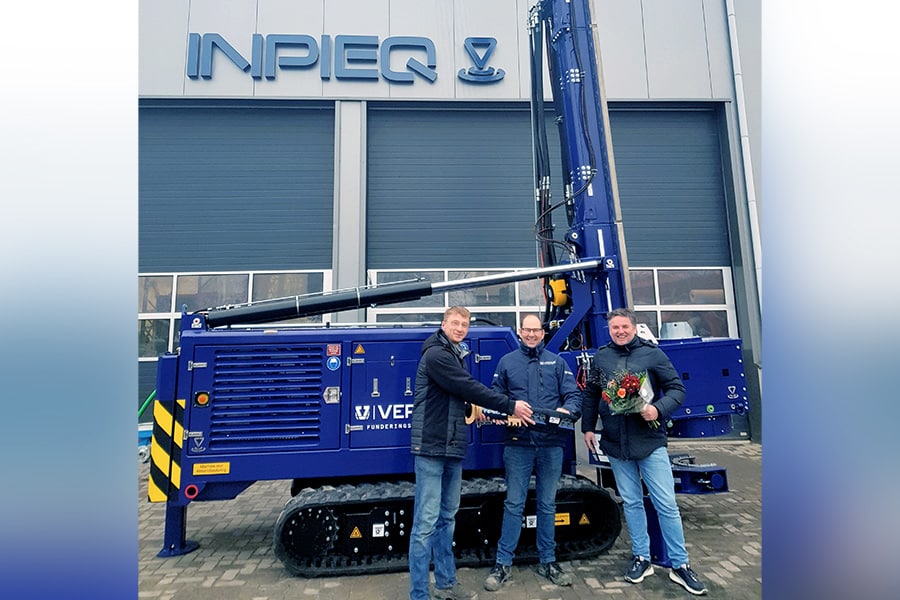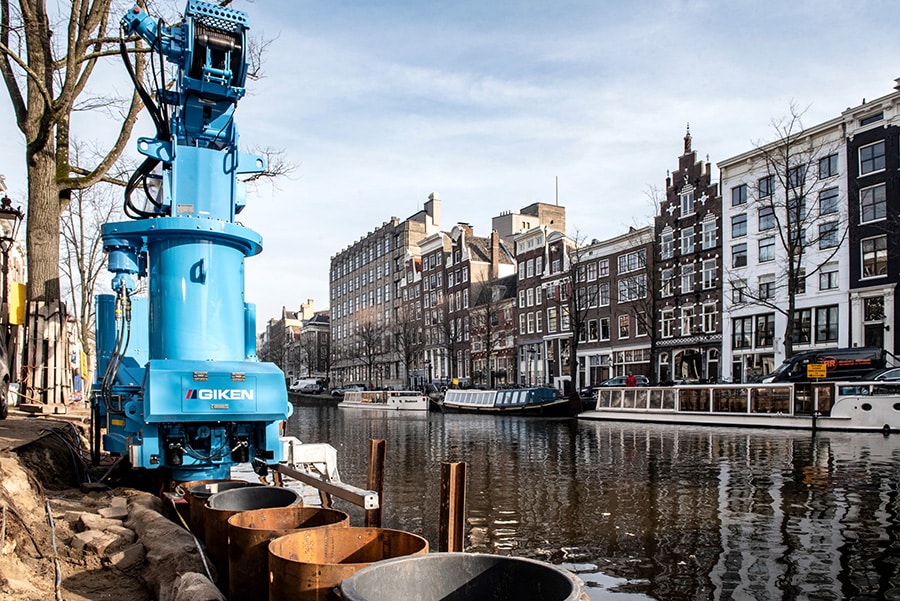
Coming full circle
Except for runway Quebec, the stretch between Kaagbaan and Zwanenburgbaan. With the Dual Runway System Completion (VDR) project, Schiphol is coming full circle. Doubling the taxiway system increases capacity and safety and makes it a lot clearer for air traffic control. An interview with Rogier Brans of NACO, part of Royal HaskoningDHV and specialized in the development of airports, and Swen den Ouden, project manager at Royal HaskoningDHV about the 'airside' challenges in particular.

As Schiphol's regular partner, NACO was asked six years ago to help look at the master plan for doubling the taxiway system, including a new avioduct over the A4 freeway. "The latter was more or less a requirement to allow even the heaviest category of (future) aircraft to cab over the national highway," NACO's Rogier Brans knows. "The existing avioduct over the A4 is not designed for that. Initially the idea was to build the new structure at the point where the rail tunnel crosses the highway, but at that location it was virtually impossible to drive piles into the ground. Reason to change the plans and "shift" the avioduct to a position parallel to the existing structure. But even that turned out to be not so easy." NACO was commissioned by Schiphol to survey the situation and the challenges.

Buffer for the future
At its current location, the new avioduct crosses not only the highway, but also a public transport tunnel, two rail tunnels, a main gas pipeline and two secondary roads and a bicycle path. "In short, a huge amount of intersections converging at one point," acknowledges Swen den Ouden, project manager at Royal HaskoningDHV. "Good preliminary investigation was crucial to avoid inconvenience or damage to the existing infrastructure as a result of building the new structure and installing the necessary (huge) foundation piles." Another challenge in turn was to assess which part of the new roadway should be constructed as an earth lane and which part as a bridge. "An earth lane is more advantageous, but it ensures that you build a barrier between Schiphol and Schiphol-South which would be less favorable for the future," Brans continued. "Schiphol has therefore anticipated the future by extending the avioduct slightly. This has created a buffer for anticipated future expansions of the metro, waterway and underlying road network."
Zulu intersection on the upswing
On the air side, Zulu intersection is going through a shake-up due to the doubling of the lane system. Brans: "In the existing situation, Zulu has six branches. We couldn't make it any more complex with a seventh branch, as that could have the opposite effect to the goal of the project: to increase safety. We made an important contribution by designing the interchange in a way that makes it less complex for users while maintaining all the necessary traffic routes.
However, the modifications do have consequences, partly because of the arrival of the new avioduct. Junction Zulu, for example, will be raised in its entirety to 1 meter because of the required sightlines from the cockpit. This even extends all the way to the Zwanenburg runway. This is because the requirement is that you must be able to see an object on the runway from the cockpit at a distance of 300 meters. So the moment an aircraft has to cross an avioduct, it presents quite a challenge. It leads to a vertical turn radius of as much as 15,000 meters (!). In addition, faint horizontal turn radii are also a requirement to be able to pass through the turn at sufficient speed. These turn radii, combined with the straight-line positions before and after the avioduct to align the aircraft, did create a geometric puzzle."

Suction effect
The new avioduct thus has a massive length of 250 meters, but at 60 meters it is also considerably wider than usual. "Strictly speaking, a width of 47 meters would suffice," Brans knows. "But then additional measures would be needed, such as raised edges to prevent aircraft from going outside the taxiway. However, such 'guides' must not cause damage to the landing gear. In short, almost impossible to design. In addition, there must be room on the avioduct for emergency vehicles that can drive around a stationary aircraft, and the engines must not hang over the National Highway because of the suction effect. The latter again requires additional provisions, such as the installation of grilles. So after much deliberation, a full-width 60-meter bearing avioduct turned out to be the safest and most cost-effective."

Phasing
Such a huge avioduct that can carry 725 tons and must cope with extremely high wheel loads is a work of art in itself. "Shrinkage and creep effects in the concrete structure have to be managed properly," Den Ouden knows. "The detailing of the bend-slip joints between the different parts of the avioduct have therefore been quite a brainteaser for structural engineers from the contractor. The same can be said about the transition between earth track (settlement body) and avioduct (fixed body on piles). Moreover, there was only limited time to get the earth course set, for example. We also gave the contractor our advice on phasing and which activities still needed to be picked up prior to execution. For example, the design takes into account a certain residual settlement that can be included in regular maintenance."
The design of the next phase is currently in full swing. The preliminary design drawn up by RHDHV is currently being further developed into a Definitive Design. This is done by the different partners of Schiphol, like BAM, Heijmans, Volker Infra and Heras. RHDHV has an advisory role in this for the client. Because of the corona crisis it is being considered whether this part of the project will be executed this year or at a later time.



